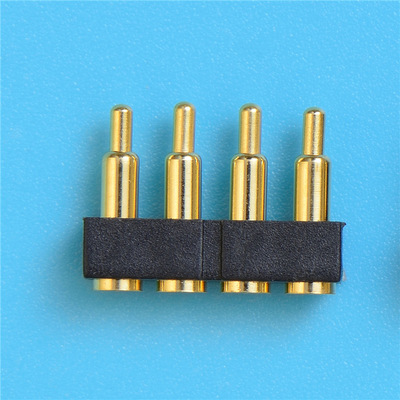Time:2025-03-21 Views:1 source:News

A PogoPin charging interface is a specialized electrical connector that has gained popularity in various electronic devices, especially those where a compact, reliable, and easy - to - use charging solution is required.
The PogoPin charging interface consists of several key components. At its core are the PogoPins themselves. These are small, spring - loaded pins that are typically made of conductive materials such as brass or phosphor bronze. The pins are housed within a plastic or metal housing, which provides mechanical support and protection. The spring - loaded mechanism of the PogoPins is crucial. When a device with a PogoPin - compatible charging dock or cable is connected, the springs compress, ensuring a firm and continuous electrical contact between the pins and the mating connector. This design compensates for any misalignments between the two components, which is common in consumer electronics where precision manufacturing tolerances may vary slightly.
The physical appearance of a PogoPin charging interface can vary depending on the application. In some devices, the PogoPins may be arranged in a linear pattern, while in others, they may be in a circular or rectangular configuration. The number of PogoPins also differs. For simple charging applications, a two - pin interface may be sufficient, with one pin for power and the other for ground. However, in more complex scenarios where data transfer may also be involved, such as in some smartphones or tablets that use PogoPin interfaces for both charging and syncing, there could be four or more pins.
The PogoPin charging interface is often designed to be small and low - profile. This is highly beneficial in modern electronic devices, which are becoming increasingly compact. For example, in a wearable device like a smartwatch, space is at a premium. The PogoPin charging interface allows for a compact charging solution that can be easily integrated into the device's design without adding significant bulk. The interface may also be designed to be water - resistant or even waterproof in some cases. This is achieved through the use of special seals and coatings on the pins and the housing. Such water - resistant designs are crucial for devices that may be exposed to moisture, like smartphones or fitness trackers.
Read recommendations:
Tesla to US standard charging gun adapter new